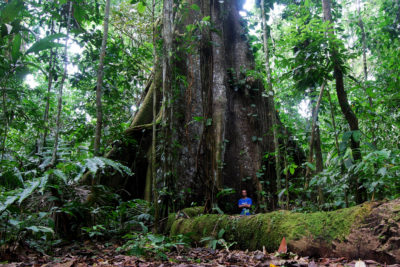
Ceiba flower - Photo by Tyrrhium
Kapok or Ceiba is a large tropical tree which produces a type of cotton. These fibers are the hairs that grow on the seeds and are used as a filling in mattresses, pillows, padding of seats, stuffed toys, and for insulation.
Kapok originates from Central America, northern South America, and the Caribbean. It is now commercially produced in rain forest areas in South and Asia (e.g. Java, Philippines, and Malaysia).
Names
Scientific
Ceiba pentandra
Synonym
Bombax pentandrum
Eriodendron anfractuosum
English
Ceiba
Java cotton
Java kapok
Kapok
Silk-cotton
Dutch
Kapok
Kapokboom
Spanish
Ceiba
Lupuna
French
Kapok
German
Kapokbaum
Wollbaum
Italian
Kapok
Other
Kankantri
Taxonomy
Genus
Ceiba
Family
Malvaceae
Order
Malvales
Basic information and facts
Origin:
Central America, northern South America and the Caribbean region.
Distribution:
Tropical regions of Central and South America, tropical Africa and Asia. Commercial cultivation especially in South East Asia, including Java, Philippines, Thailand and Malaysia.
Fruits:
Fruits are 15 cm long seed pods which contain seeds surrounded by a fluffy fiber with a yellowish color.
Climate and weather:
Tropical climates, often in rain forests, but also in drier tropical climates.
Pollination:
The flowers are pollinated by bats, but are also visited by moths and bees.
Height:
Kapok is a tall tree which can reach 60 to 70 meters. The trunk can have a diameter up to 3 meters and has buttresses.
Spacing:
Distance between trees from 7 to 10 meters.
Propagation:
Ceiba is usually grown from seed.
Harvesting:
The ripe pods are cut down or can be collected when they fall. They are then opened with mallets and seed and fibers are then removed by hand. By stirring the seeds in a basket they fall to the bottom, and leave the fibers free.
Uses:
The fibers, a type of cotton, are used for various purposes such as fillings of pillows, mattresses and padding of seats. The kapok is also used in stuffed teddy bears and other toys, and it is used for insulation.
From the seeds an vegetable oil can be pressed which can be used to make soap, as bio-fuel or in paints.
Crop categories
Pictures

Ceiba flower - Photo by Tyrrhium

Ceiba tree trunk - Photo by Geoff Gallice

Kapok tree - Photo by Mauroguanandi

Kapok tree - Photo by Alan
